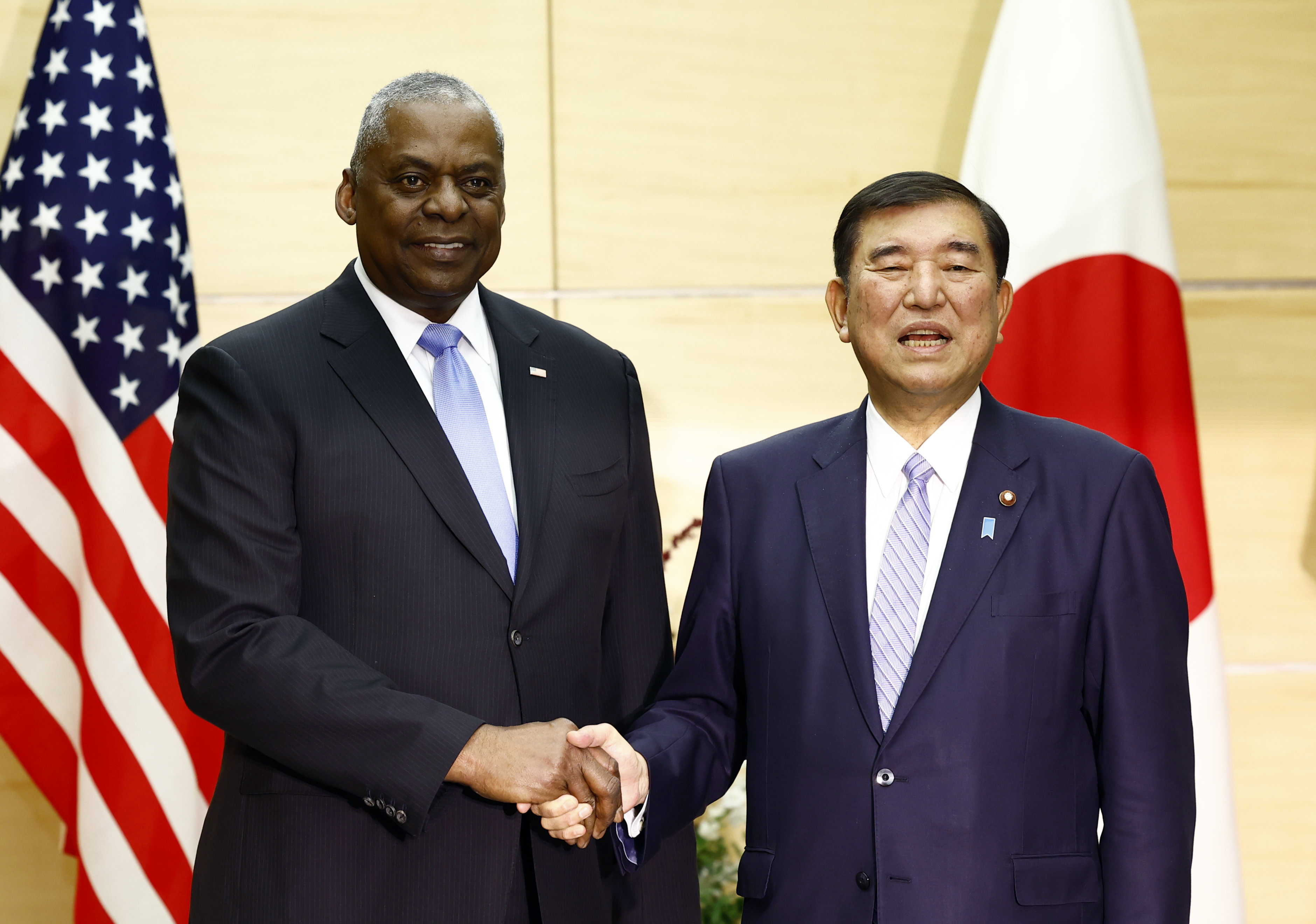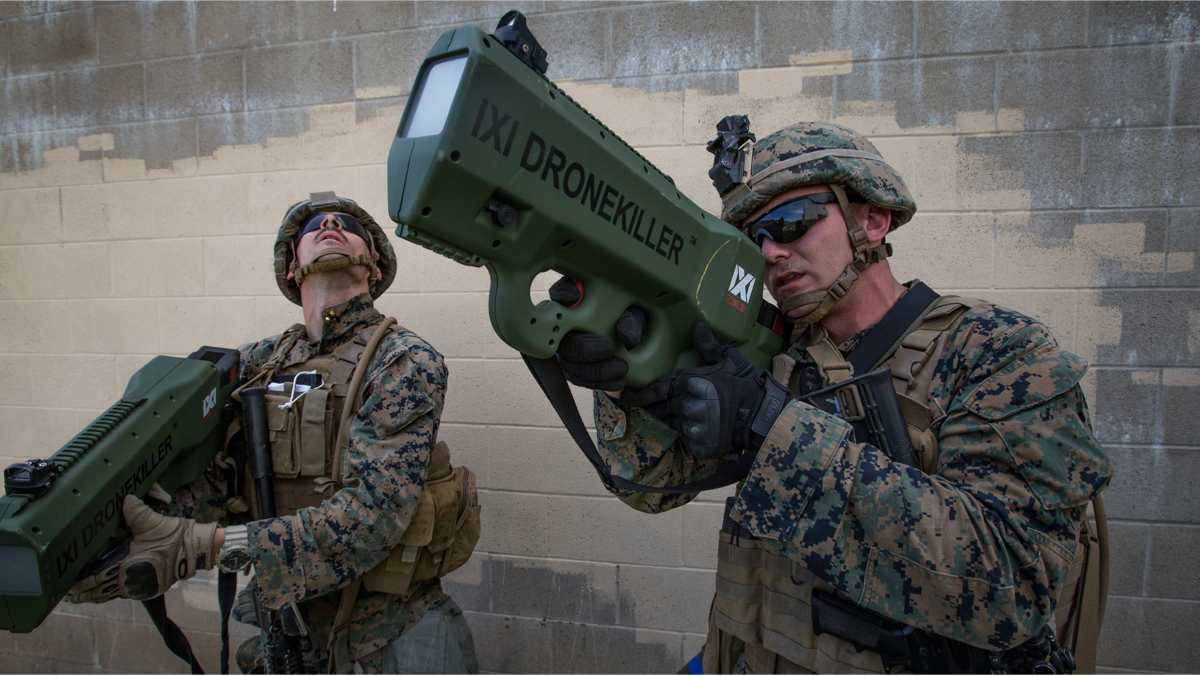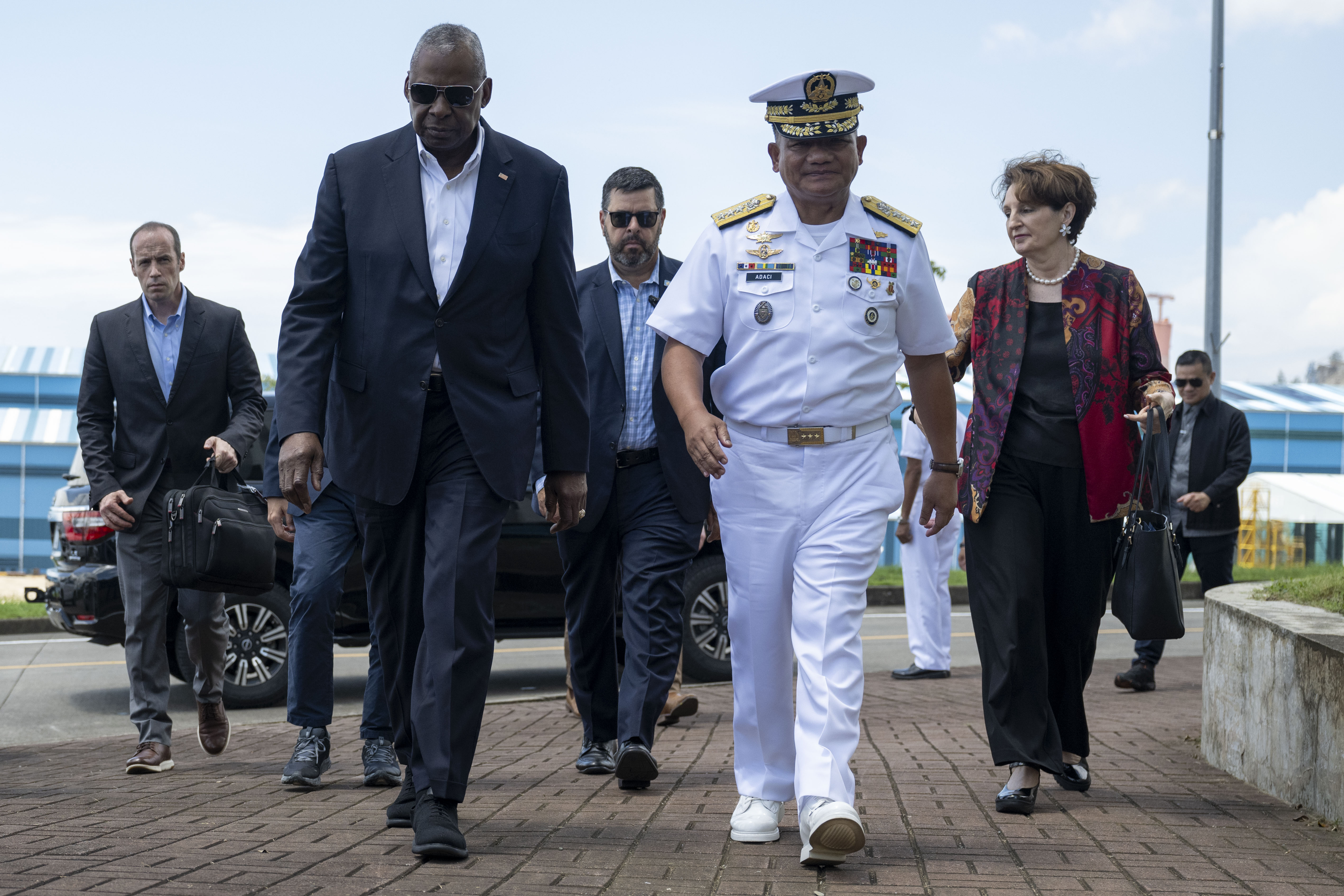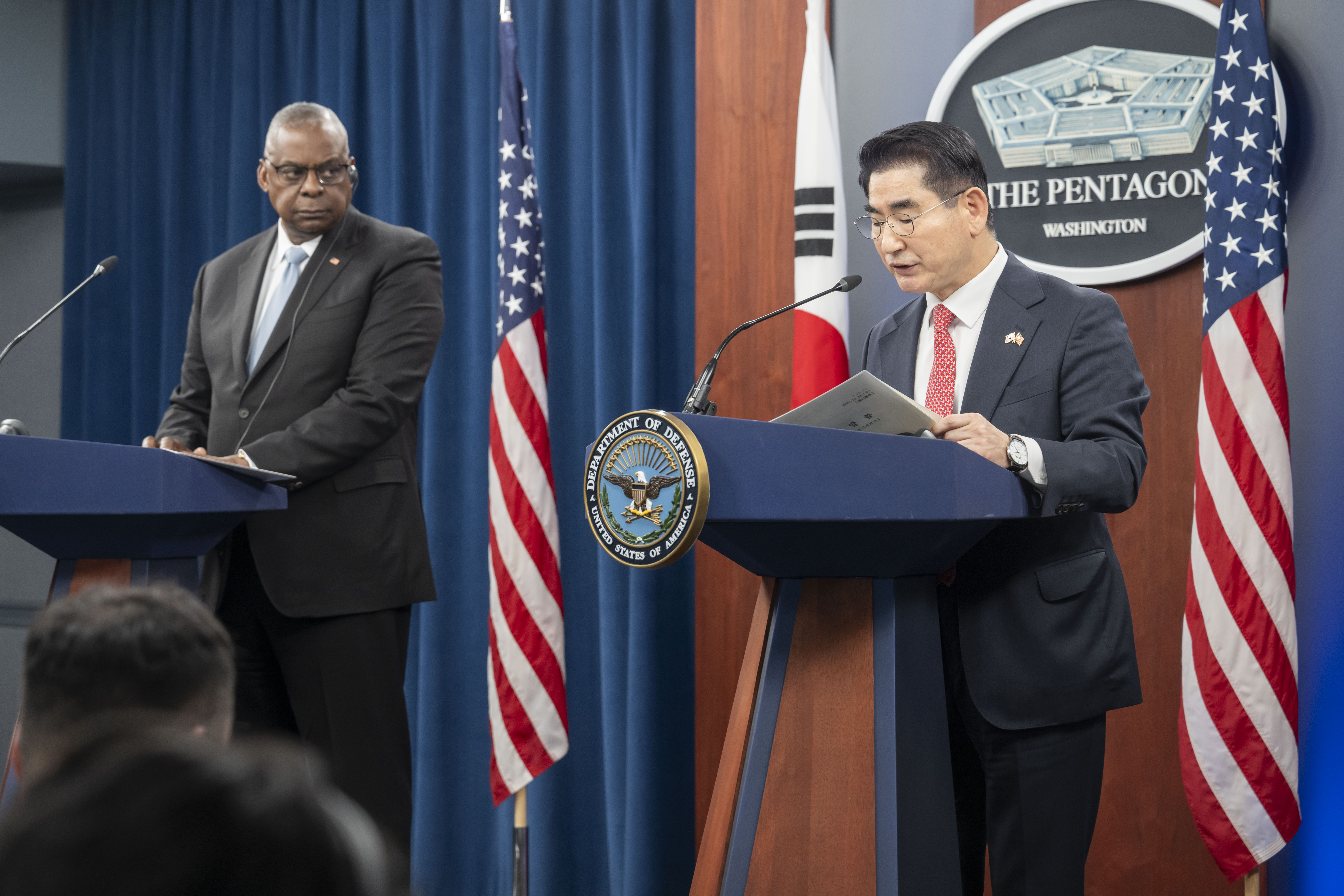[ad_1]

TOKYO — U.S. Defense Secretary Lloyd Austin met with officials in Japan on Tuesday to reaffirm the importance of their alliance and Washington’s commitment to regional security as threats rise from China and North Korea.
Austin also stressed that U.S. trilateral cooperation with Tokyo and Seoul is crucial for regional stability even as South Korea is in political turmoil following President Yoon Suk Yeol’s short-lived declaration of martial law last week.
Austin’s visit also came amid growing concerns over the safety of Osprey military aircraft, which have been grounded in the United States following a near crash at Cannon Air Force Base in New Mexico last month. The incident, caused by weakened metal components, was similar to a fatal crash off southwestern Japan last year.
The U.S. measure prompted Japan to also ground its Ospreys. After confirming details with the U.S. military, Japan’s Ground Self-Defense Force has suspended operations of its 17 Ospreys, except for possible disaster relief and other missions, beginning Tuesday to prioritize safety, Chief Cabinet Secretary Yoshimasa Hayashi told reporters.
During their meeting, Austin and Japanese Prime Minister Shigeru Ishiba noted the collapse of the Syrian government and praised the strength of the Japan-U.S. alliance at a time of rapid global political change.
“The world can change drastically in a week,” Ishiba told Austin, referring to political unrest in South Korea and Syria.
The U.S. defense chief, whose term ends in January when President-elect Donald Trump takes office, told Ishiba that he appreciated the steady alliance with Japan during “very dynamic times” and that he was proud of the modernization of alliance command and control, strengthening of force posture and deterrence capabilities over the past several years.
Austin later met with Japanese counterpart Gen Nakatani and noted China’s “coercive behavior” in the East and South China Seas and North Korean support for Russia’s war in Ukraine as growing challenges.
Austin underlined U.S. commitment “to advancing our historic trilateral cooperation” with South Korea. Washington’s commitment of “extended deterrence,” including its nuclear umbrella, to Japan and South Korea is “iron clad,” he added.
Nakatani earlier told reporters that cooperation between Japan and the U.S., as well as with South Korea and other partners, is important as tensions escalate in the region.
The trilateral partnership between Japan, the U.S. and South Korea has significantly strengthened under President Joe Biden’s administration, but faces new uncertainty amid ongoing political unrest in South Korea, which already led to the cancellation of Austin’s planned trip to that country.
On Monday, Austin greeted crew members of the George Washington, a nuclear-powered flagship aircraft carrier docked at the U.S. Navy base in Yokosuka, near Tokyo.
Austin stressed the importance of U.S. cooperation with allies and partners in the region as he singled out China as the only country in the world with the intent and capability to change the rules-based international order in the Indo-Pacific, according to the U.S. Defense Department.
“We want to see this region remain open to freedom of navigation and the ability to fly the skies in international airways,” Austin was quoted as saying on the Defense Department’s website.
“We will work with allies and partners to ensure we can do just that,” he added.
The U.S. carrier, which is under maintenance in Yokosuka, will carry the advanced F-35C stealth combat aircraft squadron currently based in the Marine Corps Air Station Iwakuni in the southwestern Japanese prefecture of Yamaguchi.
Mayuko Ono contributed to this report.
[ad_2]
Source link






